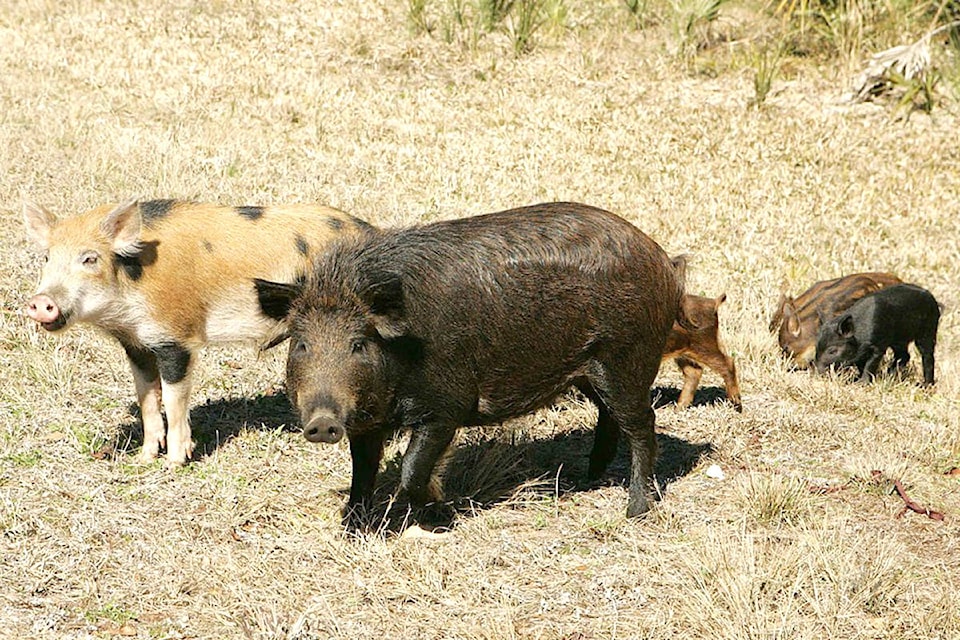Two weeks ago, when I discussed the Report-a-Weed apps, invasive animals were mentioned. The basic message I got from the Invasive Species Council of BC is, “don’t import any living things from the other side of the world that don’t have natural controls here.”
Too many times in the past, people have brought plants, animals and diseases from elsewhere to North America that have gotten loose and caused disasters across the continent.
Some examples are Covid-19, Spotted Knapweed, Killer Bees, and Feral Pigs.
This week’s article is about Feral Pigs that the CBC says were brought from Europe for meat production or for hunting. Well, surprise surprise! Some of the Wild Boars escaped into the wild and invaded other pig farms for food and breeding purposes.
At first, those responsible said, “no big deal.” But the magazine The Atlantic says the domestic pigs that the Wild Boars bred with are fertile all year round and have large litters. And National Geographic says the Feral Hogs build Pigloos, and the offspring have the Wild Boar heavy fur that protects them outside in winter conditions.
Now, The Atlantic says soon Saskatchewan will have more feral pigs than people, and Texas has a million and a half wild pigs running around loose causing havoc and costing the taxpayers $4 million a year, with little hope of eliminating all the Feral Pigs.
Question No. 1: what havoc am I talking about, you ask? According to the CBC, feral pigs have outcompeted and starved out local wildlife, eaten farmers’ complete crops, attacked calves, lambs and pregnant livestock, and even killed a Texas woman in her driveway.
Question No. 2: What’s with the “little hope” of eliminating all the feral hogs, you ask? The Atlantic says wild pigs have a 50 square kilometres range, but when we start hunting them down and shooting at them, the feral swine’s range increases by five times to 250 square kilometres.
The Atlantic says we can learn from the State of Montana, where there are no feral hogs at present. Montana has good public education around reporting wild pig sightings, support from local groups, strict laws around feral swine and immediate response to reports of wild pig sightings.
So, we should all got to the ISCBC website- https://bcinvasives.ca/, click on report, and download the “Report Invasives BC” that will work on our phone, or click on report through this website, if we see a pig in the bush.
Weed Warrior Frank
